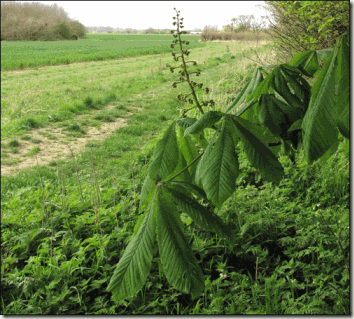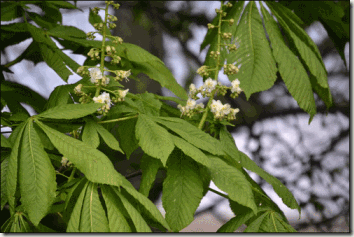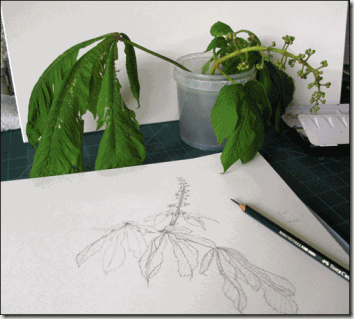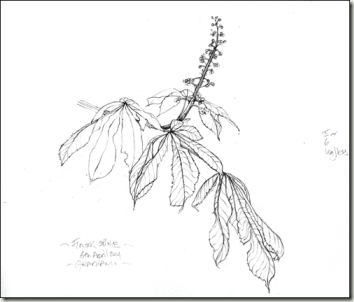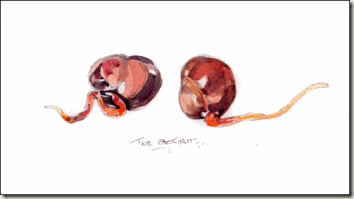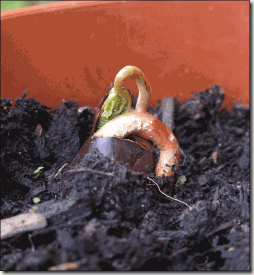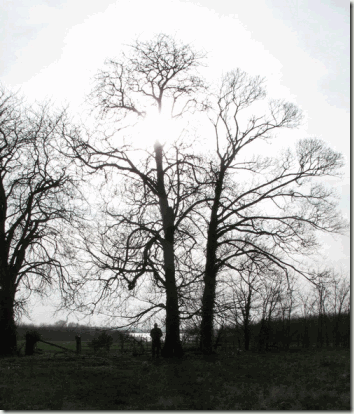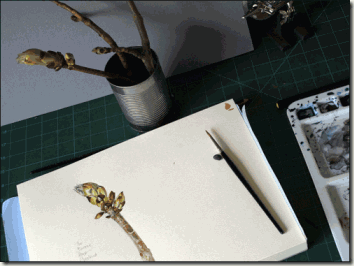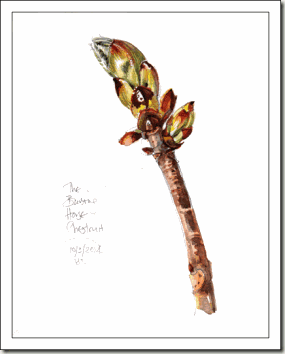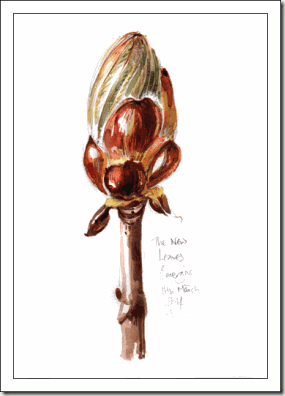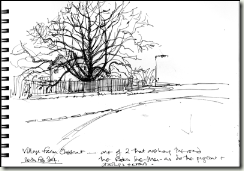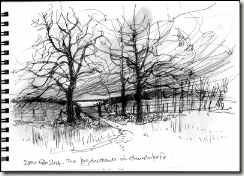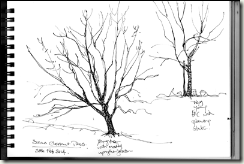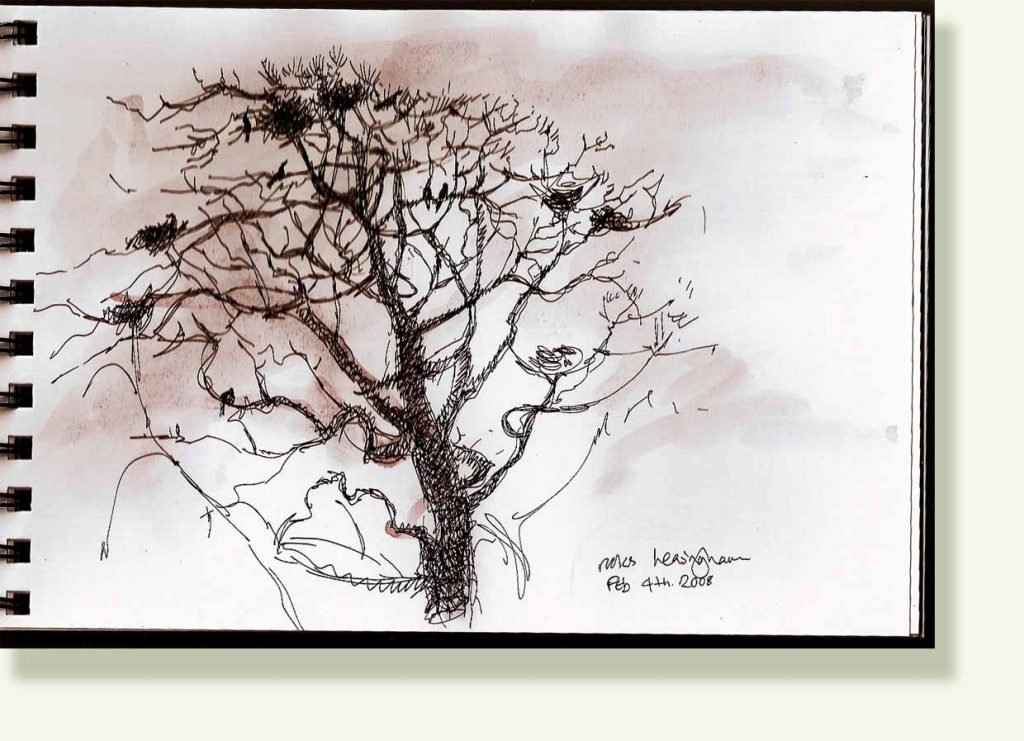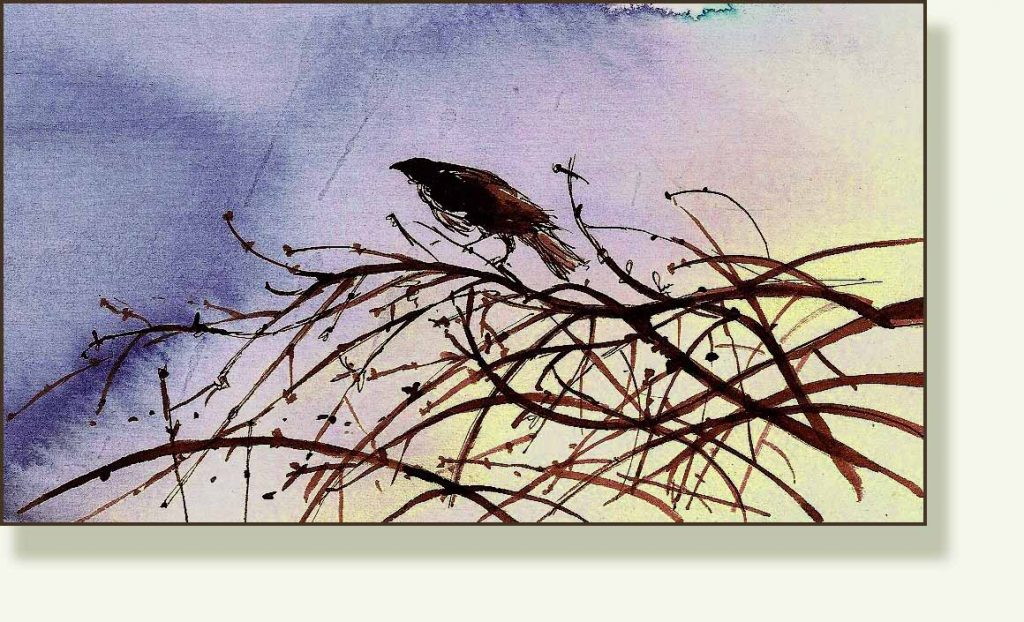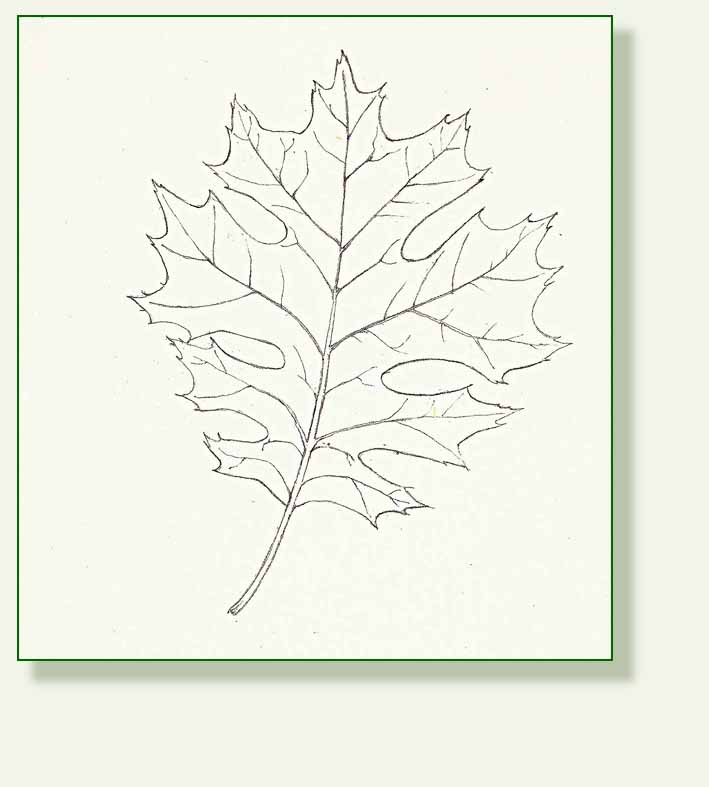My first post for Lucy’s Tree Following Project for which I will be looking at the Horse Chestnut Tree: Aesculus hippocastanum
I don’t know much about these lovely trees yet, except that they are a tree of childhood days; of conkers, sticky buds on nature tables, the magnificent “candles” when in full bloom. “Under the Spreading Chestnut Tree” the children’s chanting rhyme with the accompanying actions.
Shade from the summers heat and a nesting tree for big birds. Also a favourite subject in the much loved Ladybird “What to look For in….” books with the lovely illustrations by Tunnicliffe and in the Shell Guides with S. R. Badmin’s quintessentially English paintings. More of these artists in future Chestnut posts.
It’s not a native I know, but a magnificent specimen tree for stately homes, parklands and village greens. Although from an economic point of view they are not a very useful tree, they are none the less very beautiful.. so fall well within the “beautiful or useful” category of William Morris. I know that, like many other trees, the Horse Chestnuts are having some problems.
In this case they falling prey to the unsightly leaf miner and the more serious bleeding canker. I will learn more about all of this as I go. Initially I need to understand the basics and so I am starting with its shape. I made some quick sketches on my walk.
There are several scattered around the village from young to old which is useful. Trees look very different from different angles and are very complex things to draw, but for me sketching is the very best way to see and understand the basic shape.

This is perhaps the oldest in the village and the one I can see from the front room of the house. The street light gives some idea of its size.

There are two in Church field, in a group of four trees. A glimpse of the reservoir between the trees.

Two young trees down the lane one still with its plant stake. Sketches in A5 sketchbook
The Horse Chestnut is described as “ a native in the Balkan Peninsula A. hippocastanum grows to 36 metres (118 ft) tall, with a domed crown of stout branches; on old trees the outer branches often pendulous with curled-up tips”
I now see that the very long lower branches in the older trees hang elegantly down and curl up. The sticky buds on the ends of the upturning branches are just about to burst. Church Field Boundary Trees The two horse chestnuts in a group of four trees, one on the right of this sketch and one next to it. This view is with my back to the reservoir looking back to the church, which, minus dragon, is in the background.

Village Horse Chestnut
This is a huge tree which overhangs the road. Its lower branches hang down into the garden behind the fence while the roadside branches I think have been cut back. There were wonderful conkers this year.

The same tree as my No 1 sketch, Ugly Bungalow roof in the back ground.:)
A4 sketchbook
Tree of Kiev
Coincidentally The Horse Chestnut is a symbol of Kiev. I can only hope that the beautiful flowers to come in the spring will also bring a time of peace and political freedom to its population. It seems the Chestnuts were planted in some respects to spite the poplar loving Russian Emperor Nicholas I..
“In 1842, botanical likings of Kiev citizens and Russian authorities got drastically different. By the second half of the 19th century Lombardy poplars with the support of royal power finally became a symbol of tsarism, autocracy and conservative «patriarchal» orthodox Kiev, while chestnut trees meant for Kiev citizens disobedience to the central authorities in St. Petersburg, a new urban development and municipal government. Chestnut tree was associated with constructive opposition to absolutism. Step by step, Kievans began to give advantage to attractive chestnut trees (which were also helpful in summer hit because they were shady) instead of «officiously» decorative poplars that had no practical usage.”
Read more from the Discovery Kiev website here Trees as subversive and defiant symbols. Wonderful.


